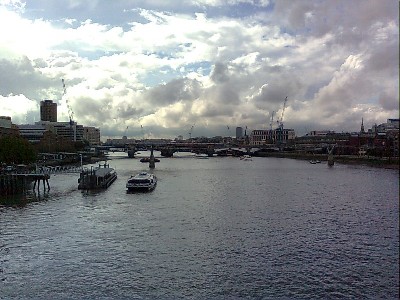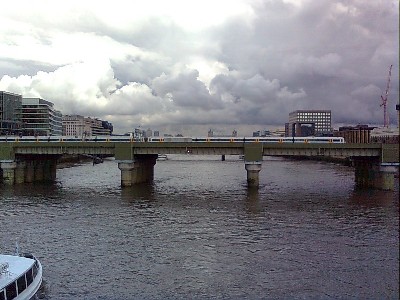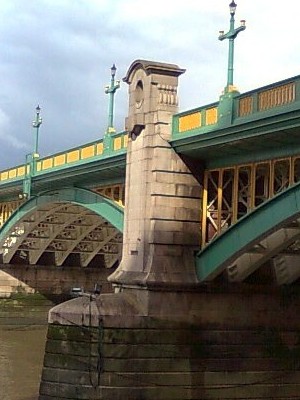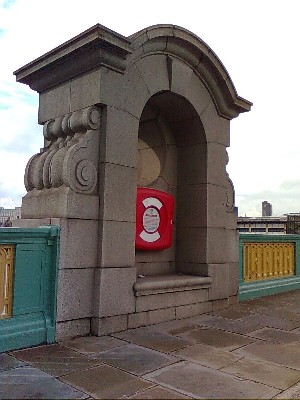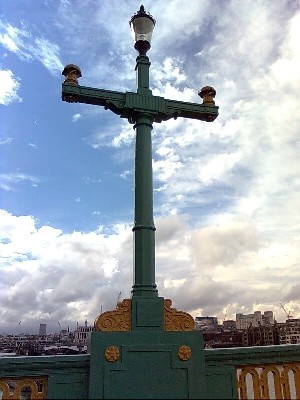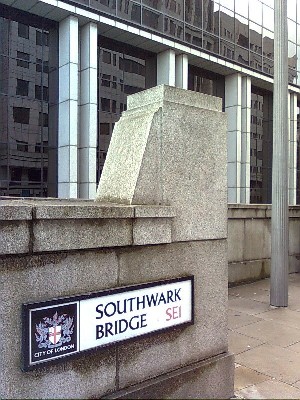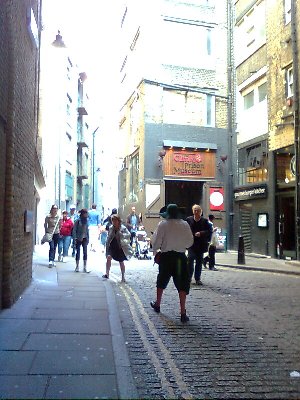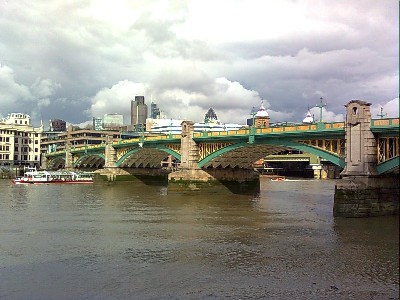
The first Southwark Bridge, a three arched cast iron bridge was opened in 1819. In 1912 it was decided that it should be replaced with a five arched bridge and the foundation stone was laid in November 1914. Work continued through the war until 1917 when a shortage of labour and a difficulty in obtaining steel brought things to a halt. Work resumed after the war but due to the high cost of materials, some of the decorative features were not completed. The tall piers at each end of the bridge weren't completed and there are empty shelves on the river side of the refuges where carved heads of tritons were to be placed but were never added. The bridge was officially opened in 1921. A tram route ran over the bridge from 1925 until the early 1950s when trams were replaced with buses. Today Southwark Bridge has the least traffic of all the bridges. It has never had good approach roads and it doesn't lead anywhere useful in either direction. It is often said that if you find yourself on Southwark Bridge, you are probably lost! Between Southwark Bridge and the next bridge stands Cannon Street Railway Bridge. The original bridge had five spans of girders resting on fluted Doric cast iron cylinders with decorated brackets forming a cornice. It carried five tracks with a footpath cantilevered on each side, the downstream path for railway staff and the upstream one for the public. From 1880 to 1892 the bridge was widened and an extra five tracks added and at the same time the public footpath was removed. In the late 1970s the bridge was rebuilt and the number of tracks reduced again to five. Sadly, with the rebuild, much of the decorative work was lost. |
